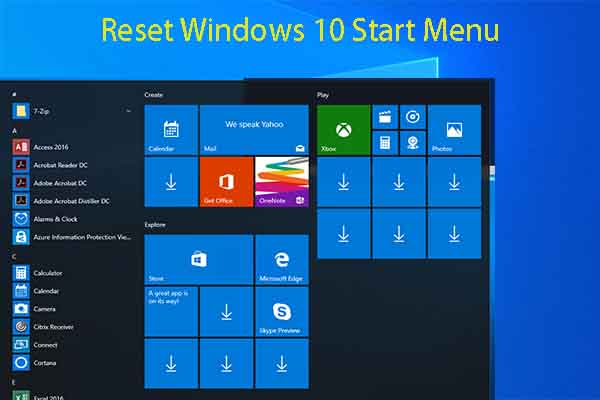A great number of users have upgraded their computers to Windows 11 since it was released in 2021. However, some sounds telling others not to upgrade to Windows 11 also exist. Why not upgrade to Windows 11? In this post, MiniTool Partition Wizard summarizes 6 main reasons why people refuse to upgrade to Windows 11. You can take a look.
Windows 11 is a major release of Microsoft’s Windows NT operating system that was released on October 5, 2021. Some users upgrade to Windows 11 quickly for new user interface (UI), improvements, features, etc. Others do not upgrade to Windows 11 yet. They are still waiting and seeing how Windows 11 is running and thinking of if it is worth upgrading to this version.
If you are using another Windows OS rather than Windows 11, you may have difficulty deciding whether to upgrade to Windows 11 or not. To help you make an ultimate decision, we’d like to recommend you further learn the pros and cons of Windows 11. In this post, we mainly discuss the reasons not to upgrade to Windows 11.
MiniTool Partition Wizard DemoClick to Download100%Clean & Safe
The System Requirements of Windows 11 Are Stricter
The new requirements for your system may be why not to upgrade to Windows 11. Compared with other Windows operating systems, Windows 11 has higher system requirements. You can check basic Windows 11 system requirements from below:
- Processor: 1 GHz or faster with 2 or more cores on a compatible 64-bit processor or System on a Chip (SoC)
- RAM: 4GB
- Storage: 64GB
- Graphics card: DirectX 12 or later with WDDM 2.0 driver
- TPM: Trusted Platform Module version 2
As you can see, the required storage space for Windows 11 is about twice as large as Windows 10. Besides, your computer’s RAM should be 4GB if you want to upgrade to Windows 11. Another thing you should note is that the TPM 2.0 is not available for lots of computers.
Therefore, if your computer doesn’t meet the Windows 11 system requirements and you don’t want to buy a new computer, you may not consider upgrading to this Windows OS. It might be the most common reason why not upgrade to Windows 11.
Windows 11 Changes the Layout of the Taskbar
The changes to the taskbar may be another reason why not to upgrade to Windows 11. Windows 10 allows you to position the taskbar at the bottom, top, right, or left. Instead, you can only place the Windows 11 taskbar at the bottom, aligning it to the left or in the center. And if you use the center alignment by default, the position of each icon will change when you open or close apps.
Additionally, the new Windows OS removes many helpful features from its taskbar, such as News and interests, Windows Ink Workplace, and so on.
Windows 11 Makes the Start Menu Less Attractive
The Start menu may also be why not upgrade to Windows 11. When you open the Start menu in Windows 11, a large window will pop up, taking up a large part of your screen. And you cannot resize the menu by dragging it with your cursor. That may give you a bad experience while using the Start menu.
What’s worse, the Recommended section in the Windows 11 Start menu keeps showing certain files even if you have deleted them from your system and doesn’t allow you to remove or hide them.
Windows 11 Cancels Timeline
Timeline is a feature included in Task View in Windows 10. It shows a history of activities you have recently performed on modern UWP apps, like Photos, Paint, Office 365, etc. Moreover, this feature can synchronize those activities across the computers using the same Microsoft account.
The Timeline feature is useful to list your activities in previous days chronologically. If you often utilize this feature, the cancellation of Timeline in Windows 11 may be the reason why not upgrade to Windows 11.
Windows 11 Needs a Microsoft Account to Log In
Windows 11 requires a Microsoft account to log in. If you plan to skip the login with a Microsoft account, you may need a series of complex operations. Therefore, do not upgrade to Windows 11 if you don’t want to accept the new requirement.
Microsoft Still Supports Windows 10
As announced by Microsoft, Windows 10 will last until October 14, 2025. So, you still have time to seriously consider it and are not in a hurry to upgrade to the new Windows.
Why not upgrade to Windows 11? We list 6 reasons for you in this post. If you worry about them, you can keep using the current Windows OS on your PC. If you have different reasons why not upgrade to Windows 11, leave them in the following comment part for discussion.


User Comments :